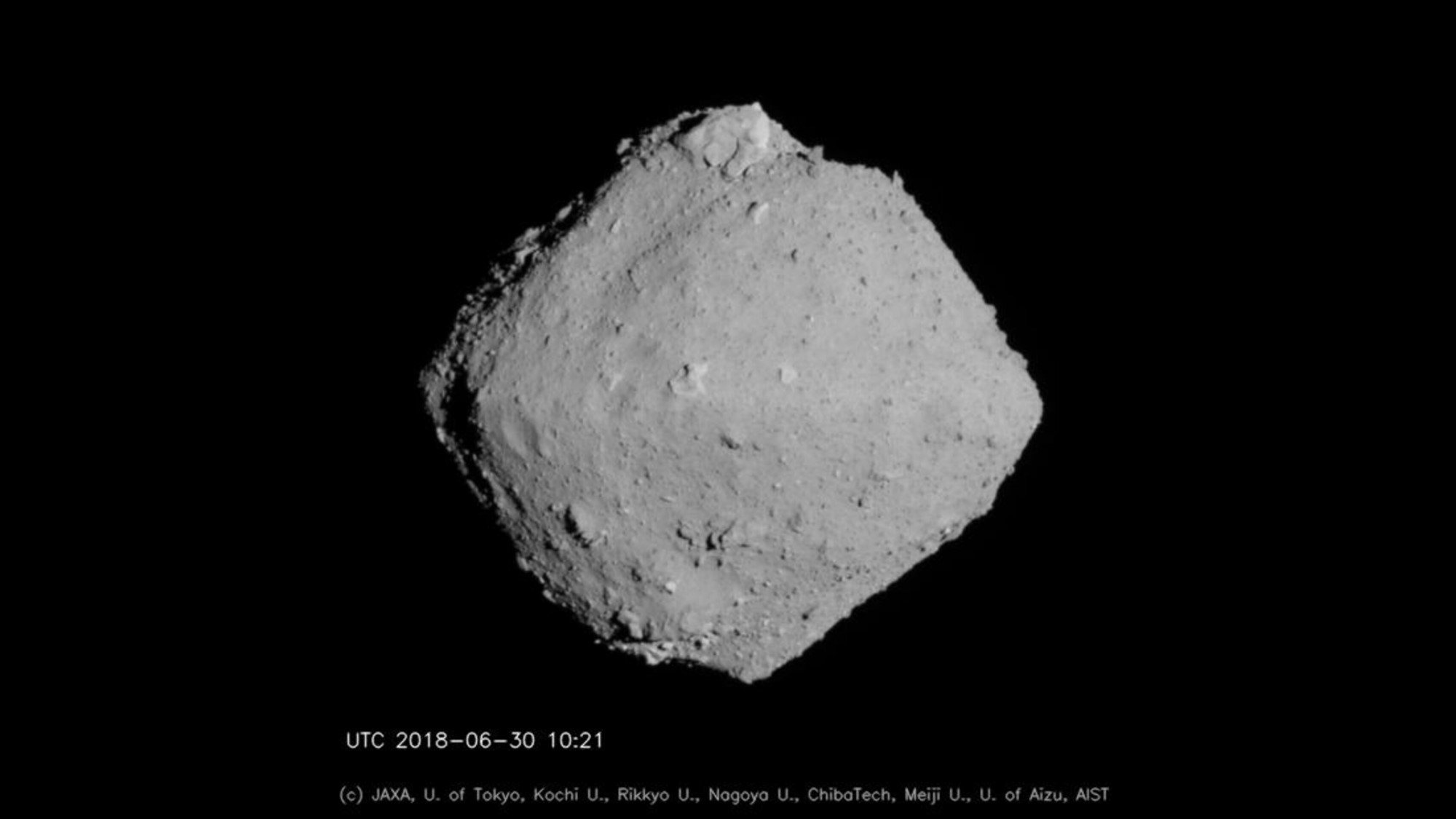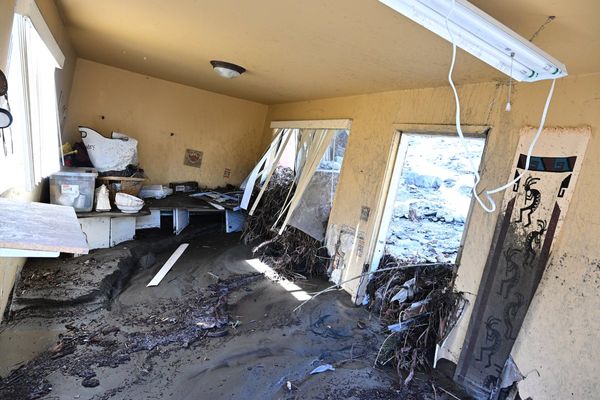
One of the four nucleobases of RNA has been discovered in samples retrieved from the asteroid Ryugu, providing the strongest evidence yet that the organic building blocks for life on Earth came from space.
In December 2020, Hayabusa2, a mission of the Japan Aerospace Exploration Agency (JAXA), delivered by capsule and parachute 0.19 ounces (5.4 grams) of asteroid material from Ryugu to expectantly waiting scientists on Earth.
Analysis of these samples have shown them to be the most primitive material ever studied in a laboratory, dating back to before the planets formed 4.5 billion years ago. The isotopic composition of gases contained in those materials revealed that Ryugu formed much farther out from the sun, close to the orbit of Neptune, compared to its present location near Earth.
Related: Facts about asteroid Ryugu, the twirling space rock visited by Hayabusa2
Now, new research has culminated in the discovery of concentrations of uracil in the samples. Uracil is a nucleobase, one of four (along with adenine, guanine and cytosine) that make up ribonucleic acid, or RNA, which is used by cells to communicate genetic information. The concentration of uracil was greater (32 parts per billion) in the sample taken from deep below Ryugu's surface than in the shallower sample (11 parts per billion), indicating that cosmic rays and ultraviolet light from the sun may have degraded the amount of uracil nearer the surface.
Ryugu's composition indicates that it belongs to the same family of asteroids as a type of carbon-rich meteorite known as CI chondrites, of which only five have been recovered on Earth so far. Previously, three nucleobases had been detected in the CI meteorites, while all five nucleobases (the four for RNA, plus thymine, which replaces uracil in DNA) have been found in a different type of meteorite, CM chondrites.
However, the lead researcher of the new study, Yasuhiro Oba of Hokkaido University in Japan, told Space.com that "one could not completely exclude the possibility that they were terrestrial contaminants," referring to the meteorite nucleobases.
But the discovery of uracil in two samples from Ryugu confirms that nucleobases are indeed present in pristine asteroidal material dating back to the earliest days of the solar system.
"The discovery of biologically relevant molecules such as nucleobases in the most pristine extraterrestrial materials without any terrestrial contaminations guarantees that they are really present in extraterrestrial environments," said Oba.
The discovery is incredibly important for astrobiologists. It is a step along the road to understanding the origin of life, and whether the processes that led to the appearance of life on Earth can be repeated elsewhere in the universe.
When asked whether it means that the building blocks of RNA and DNA came to Earth from space, Oba said "Absolutely, yes — there is no doubt that extraterrestrial materials were falling to the early Earth."
Related: Asteroid Ryugu is rich in organic molecules that can be building blocks of life

So it seems that RNA and DNA initially formed on Earth from nucleobases brought here by asteroid impacts and meteorite falls long ago. However, there is another possibility, which is that RNA and DNA molecules may have formed in space themselves before being delivered to the young Earth. The question mark here is that biochemists currently do not fully understand what conditions are required for RNA and DNA to form on asteroids.
Another possibility is that uracil and other nucleobases may pre-date the formation of our solar system. They may have been formed in deep space via photochemical reactions — the action of ultraviolet light on organic molecules — on ices in interstellar clouds from which the solar system, and other planetary systems including their asteroids, formed. The basic stuff of life as we know it on Earth could potentially be spread across the galaxy. If nucleobases are common in the universe, then any hypothetical alien life may also possibly use RNA and DNA.
One clue could be in the additional discovery of two types of organic compound called an imidazole in the Ryugu samples. An imidazole is part of the molecular structure of uracil. One type of imidazole called 4-ICA was found with a similar concentration as the uracil in the samples, whereas 2-ICA had a lower concentration. The 4-ICA imidazole can form during chemical reactions involving poisonous hydrogen cyanide, which is a common icy ingredient in interstellar clouds.
Oba said that the Ryugu samples have now been exhausted, and future searches for more nucleobases in asteroidal material will have to wait for NASA's OSIRIS-REx mission to bring at least 60 grams worth of samples from asteroid 101955 Bennu back to Earth in September 2023.
"Since we will have larger sample amounts than Ryugu, we expect to find [a] more diverse suite of nucleobases and other related molecules in the Bennu samples," said Oba.
The new study was published online Tuesday (March 21) in the journal Nature Communications.
Follow Keith Cooper on Twitter @21stCenturySETI. Follow us on Twitter @Spacedotcom or on Facebook.







